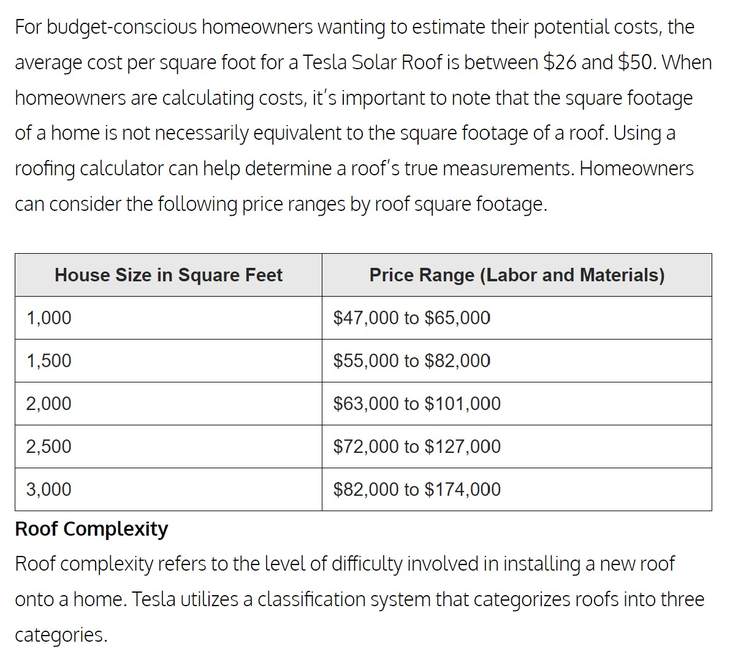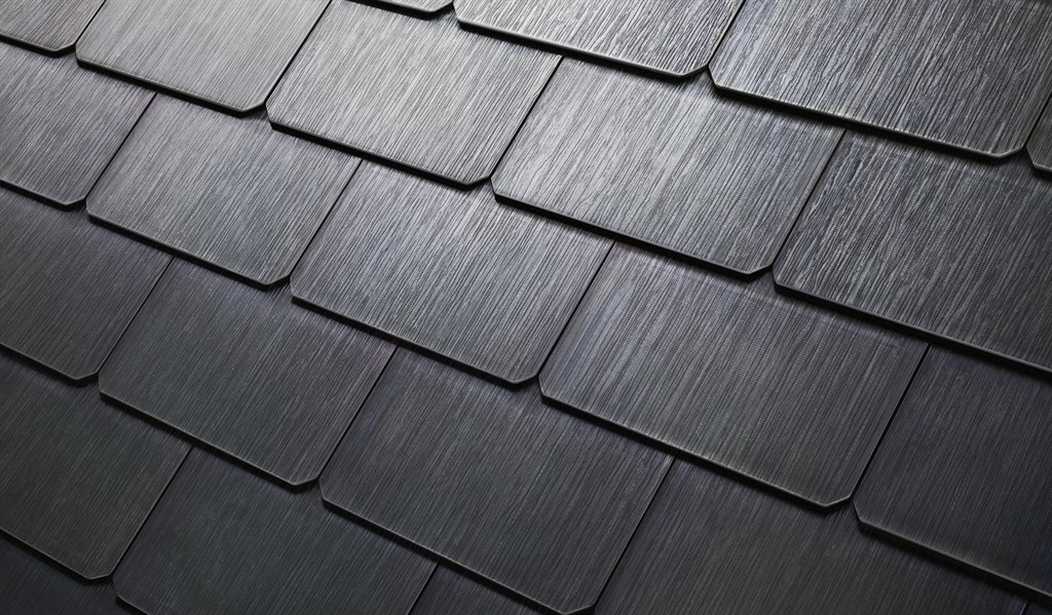There was an interesting blurb about Tesla’s solar shingle roofing system that I’d missed.
I’d completely forgotten Elon Musk that had purchased a solar panel company back in 2016, but you know that couldn’t be the whole story.
The company he “bought” to merge with Tesla was called SolarCity. It had started in 2006 and was known for high-quality, really efficient solar panels. It was one of the first to do the door-to-door sales model that has all these obnoxious dudes banging on our front door here now. The difference is, they also manufactured all their own panels and equipment in Fremont, CA.
Elon also sat on their board.
SolarCity began in 2006 as a residential and commercial solar provider, manufacturing and installing its own solar panels and equipment. The company was headquartered in Fremont, California, before being purchased by Tesla Inc. in 2016 for $2.6 billion.
SolarCity was widely considered one of the best solar companies in the years leading up to 2016…
…So, what made SolarCity stand out in its heyday? The company specialized in high-volume installations of power purchase agreements (PPAs) for solar, popularizing a door-to-door solar sales structure similar to those in use today by companies like Sunrun. In addition to its installations, SolarCity manufactured a number of cutting-edge products such as advanced rooftop solar panels, a prototype for solar shingles and more.
…SolarCity’s panels were at one point among the most efficient solar panels on the market, topping even industry leader SunPower in 2015.
Rapid over-expansion, debt accrued to finance the same, and cheap Chinese panel competition began doing them in. What had once been a sterling reputation for customer service rapidly degenerated into “These guys suck.”
By 2016 they were about to crash, and board member Elon stepped in with a purchase offer of $2.6B to pull them in under the Tesla umbrella.
…The deal is a major part of Tesla Chief Executive Elon Musk’s master plan “part deux” that calls for the company to offer consumers a single source of hardware to power a low-carbon lifestyle.
The combined entity will offer consumers solar panels, home battery storage systems and electric cars under a single brand.
What complicated that offer – and became the focus of a lawsuit by shareholders later – was the fact that the company had been founded and was still owned by Musk relatives.
…It didn’t help that the owners of SolarCity were relatives of Elon Musk, who was also a board member for SolarCity prior to the acquisition. Musk had to appear in court to defend the acquisition at one point during a separate lawsuit by shareholders who saw the purchase as more of a bailout.
Musk prevailed, and SolarCity became Tesla Solar, but it left a bad taste in a lot of mouths.
Besides Tesla’s chargers, batteries, and PowerWall installations, Elon announced plans for, not just solar roof panels, but for a solar roof shingling system. One that would be more efficient and aesthetically pleasing than the ubiquitous panel racks, while providing every bit of the security a regular roof did.
It took four years to get a product they could install and specially trained contractors approved who could do so across the country, but, in 2020 they officially started, and they do look wicked cool (I know our John here has one). But after an exciting start and ambitious goals of producing and installing 1000 roof systems a week, TeslaSolar has quietly fallen off the map for roof installations.
Tesla has only installed 3,000 of its Solar Roof systems in the U.S. since touting the technology seven years ago, according to new research from Wood Mackenzie.
That installation rate falls well shy of Tesla’s guidance and ambitions for what it previously called its “solar glass” roof tiles. Wood Mackenzie notes that in late 2019 the company said it was aiming to manufacture 1,000 Solar Roofs weekly, and to install 1,000 per week in the first half of 2020.
The report offers the latest glimpse into Tesla CEO Elon Musk’s struggle to integrate a solar energy business into his electric car company following the 2016 acquisition of SolarCity, a solar installer founded and run by his cousins Peter and Lyndon Rive with his help.
Average weekly Tesla Solar Roof installations reached just 21 in 2022, Wood Mackenzie said. Tesla hit a high of 32 average weekly installations in the U.S. in the first quarter of last year, according to the study.
Tesla has also stopped making the glass themselves.
…While Tesla intended to manufacture all of its solar roof tiles initially, it has instead procured photovoltaic glass from Chinese supplier, Almaden. Residential roofing company GAF Energy began manufacturing and selling a competing solar shingle to residential roofers in 2022.
The Tesla Solar Roof commanded less than .03% of the approximately 5 million new rooftops built in the U.S. in 2022, according to Wood Mackenzie.
There’s also a question of cost. A traditional shingle roof here now is going for $10-16K for an 1800 sqft house, a metal roof like ours can be over $25K. On top of that, your solar panels can run as high as $30K depending on what the company sells you, and/or what you know you need/want. The estimates for a Tesla roof that I’ve seen digging around this morning are pretty breathtaking. You have to be truly committed to solar, have expendable income, the most unreliable power, or the most insane electric bills to jump on one right now. And I’m speaking as a person who feels like they stole their new metal roof right as the price spikes of a hurricane were going through.
One thing is certain, though. The average Tesla Solar Roof cost is nothing short of an investment. According to HomeGuide, the cost of a Tesla Solar Roof runs anywhere from $60,000 to $150,000, with homeowners across the country paying an average of $105,000 for materials and installation.

The home sites I looked at are saying it averages 75% more than a conventional roof. I don’t know about THAT math.
It doesn’t help that the company had procurement issues in 2022, and at one point had stopped installing roofs completely, cancelling scheduled installations.
Rumor has it that was due to issues with tiles and procurement, as I said, but that sort of glitching at that price point irritates people, Supposedly they were trying a new version out on employee houses first and then resume installations in Q4 of 2022,
…It’s unclear as to what exactly the new features are in version 3.5, but the focus seems to be on durability and ease of installation. If implementations on employees’ roofs go well, we’ll most likely see an introduction of the new Solar Roof at the end of this year when they begin installations.
…According to Electrek, Tesla halted scheduling solar roof installations across most markets in the US. This is allegedly due to high cost, and issues with the roof tiles. Third-party companies, however, were able to continue installing Solar Roof.
During the second quarter of 2022, Tesla installed 23 roofs per week or 2.5 MW, short of their intended goal. It’s possible Tesla was waiting for the newer version of the roof tiles before resuming installations.
There’s been some other bad press as far as Tesla resuming roof installations.
Tesla agreed to pay just over $6 million to settle a class-action lawsuit brought by customers who faced sudden Solar Roof price hikes in 2021 after agreeing to have the systems installed at their homes.
…As CNBC previously reported, Tesla Solar Roof customers had signed contracts with the company and prepared to have the systems installed at their homes, when they were surprised by sudden price increases in 2021 that required higher payments to move ahead with their installations.
The price hikes were no small change. A lead plaintiff in the class action, Matthew Amans, saw his solar roof price increase from around $72,000 in his original contract to around $146,000 per court filings.
Tesla hiked prices for its solar installations at least twice that year, and made it a requirement for customers ordering solar panels or roof tiles to order the Powerwall home energy storage system as well.
According to the amended class-action settlement agreement, filed with a U.S. District Court in San Francisco on July 10, 2023, as of the end of June this year, approximately 8,636 Tesla customers were part of the group affected by the price hikes, and the surprise of the changing costs and terms for customers resulted in just over 6,300 canceling their Solar Roof contracts with Tesla Energy.
You can’t “surprise” customers who are already forking out a king’s ransom for a roof with a price hike that can double the cost, then lose 2/3 of your contracts, and still maintain a business – I don’t care what kind of “genius” you are.
We’ll see what that works out to for this year for the company. Doesn’t look very bright, does it?







Join the conversation as a VIP Member